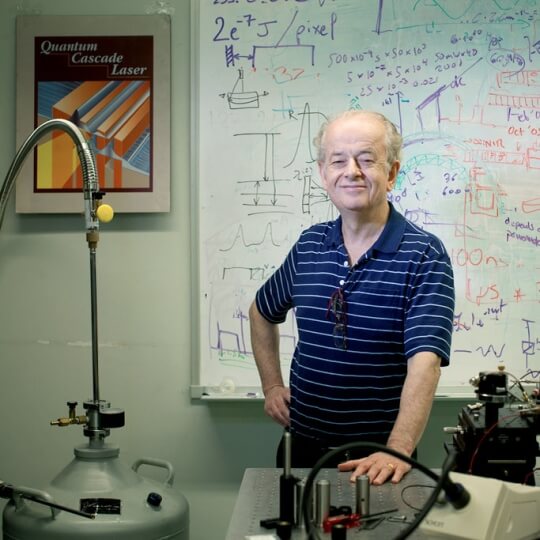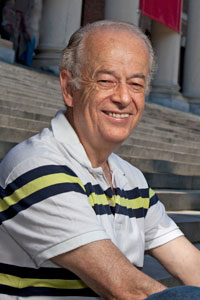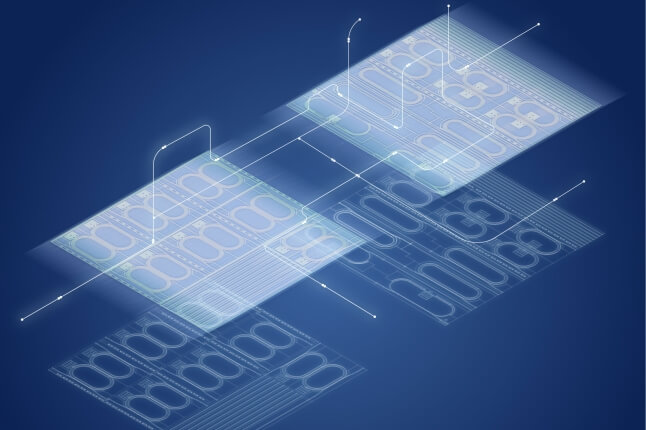News
Federico Capasso said it was an "honor just to be nominated" for his work on the quantum cascade laser. (Photo courtesy of the European Patent Office.)
On June 14, the European Patent Office (EPO) honored outstanding inventors for their contribution to social, economic, and technological progress with the presentation of the European Inventor Award (EIA), Europe's most prestigious prize for innovation.
The Danish Crown Prince and Princess, around 350 economic and political decision makers, researchers, scientists, and intellectual property specialists attended the award ceremony at the Royal Danish Playhouse in Copenhagen.
Federico Capasso was among those nominated for the prize in the "Non-European Countries" category for his work on laser technology. The EPO award ultimately went to Dr. John O' Sullivan, Graham Daniels, Dr. Terence Percival, Diethelm Ostry and John Deane from Australia who laid the foundation for today's wireless networking technology (Wi-Fi).
"It was an honor just to be nominated and to be in such good company," said Capasso, Robert L. Wallace Professor of Applied Physics and Vinton Hayes Senior Research Fellow in Electrical Engineering at the Harvard School of Engineering and Applied Sciences.
Originally invented at Bell Laboratories by a team of researchers led by Capasso and Jérôme Faist (a professor at the Swiss Federal Institute of Technology, Zurich), quantum cascade lasers (QCLs) are able to reach areas of the electromagnetic spectrum previously untouched by laser light.
Today, the ability of QCLs to produce wide bandwidths, high brightness, and high power very efficiently from a compact source has resulted in a wide array of unique products, from handheld sensors for the detection of explosives and other toxic chemicals to more powerful radar systems.
###
About the European Inventor Award (EIA)
Launched in 2006, the European Inventor Award is presented annually by the EPO, in co-operation with the European Commission, the country which holds the EU Council Presidency at the time of the award ceremony, which this year is Denmark, and the respective national Patent Office, this year the Danish Patent and Trademark Office. The award honours inventive individuals and teams whose pioneering work provides answers to the challenges of our age and thereby contributes to progress and prosperity.
Inventors of any nationality in any technological field who have been granted at least one valid European patent for their invention are eligible for consideration, with nominations submitted by the public and patent specialists from all over the world. An international jury comprised of leading personalities from industry, science, politics and media selects three finalists from hundreds of applicants, from which one winner is chosen. The criteria for evaluation include the invention's overall benefit to society, the economic success of the invention in terms of job creation and development as well as its impact on technology.
About the European Patent Office (EPO)
With almost 7,000 employees, the European Patent Office (EPO) is one of the largest European institutions. Its headquarters are in Munich and it has offices in Berlin, Brussels, The Hague and Vienna. The EPO was founded with the aim of strengthening co-operation between the European states in the field of invention protection. Through the EPO's centralised patent granting procedure, inventors are able to obtain patent protection in the 38 member states of the European Patent Organisation. The EPO is recognised by its users for delivering high quality patents for an economic region comprising some 600 million inhabitants. It is the world's leading authority in patent information and patent searching. In 2011, the EPO received a record number of 244,000 patent filings and granted 62,115 European patents.
Topics: Applied Physics
Cutting-edge science delivered direct to your inbox.
Join the Harvard SEAS mailing list.
Scientist Profiles
Federico Capasso
Robert L. Wallace Professor of Applied Physics and Vinton Hayes Senior Research Fellow in Electrical Engineering




